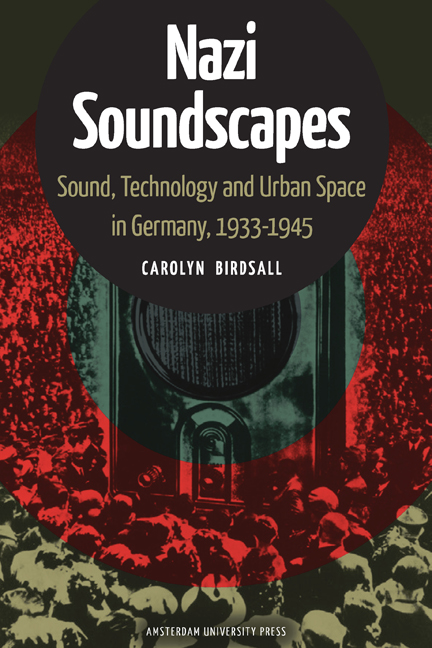1 - Affirmative Resonances in Urban Space
Published online by Cambridge University Press: 20 January 2021
Summary
Albert Leo Schlageter, a former soldier and right-wing activist, was arrested for his role in a sabotage attack on a goods train passing through Düsseldorf in 1923. After being sent to trial, Schlageter was sentenced to death by the French military occupiers of the German Rhine-Ruhr area. Following his death in the early morning hours of 26 May 1923, various political parties tried to seize on Schlageter's memory, with Communists attempting to downplay his right-wing allegiances in a bid to make a claim on this “service to the German people.” In the following decade, the National Socialist Party effectively capitalised on Schlageter, producing a range of images, slogans and commemorative events. Almost all aspects of Schlageter's biography and status as a heroic freedom fighter were fully exploited in the attempt to create a national symbol of anti-French resistance. In fact, the success in promoting Schlageter as a Nazi patriot enabled a popularised appropriation of the anti-French resistance, which magnified his minor part out of all proportion.
The importance of Schlageter for Nazi propaganda took on new proportions after the Nazi Party seized power in January 1933. Schlageter's role as a Nazi martyr offered an indispensable prototype of the “New Man” needed for the party's anticipated Volksgemeinschaft: youthful, impulsive, masculine and soldier- like. As a symbol of male sacrifice for the nation, Schlageter thus provided a model for new social relations based on the subordination of individual needs to those of the community. Schlageter's function within early Nazi propaganda is best illustrated by the massive three-day commemorative festival held in late May 1933, which took place in Düsseldorf on the ten-year anniversary of his death. With over three hundred thousand extra visitors in Düsseldorf, the Nazi newspaper Volksparole described the large scale and intensity of the event in glowing terms:
The dignity of the festival, its size and importance, made its impression on the cityscape. No house without flags, no streets without rows of facades decorated in greenery. […] Never before had Düsseldorf, indeed, one could say, never before had a city in Germany seen a richly coloured spectacle as this. Words no longer suffice, the eyes cannot grasp everything. Incalculable masses of spectators and marching columns.
- Type
- Chapter
- Information
- Nazi SoundscapesSound, Technology and Urban Space in Germany, 1933–1945, pp. 31 - 64Publisher: Amsterdam University PressPrint publication year: 2012



